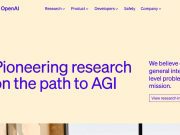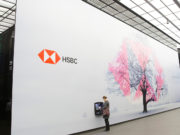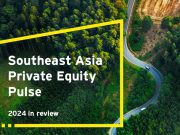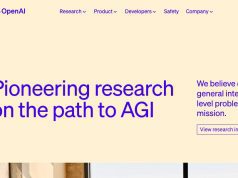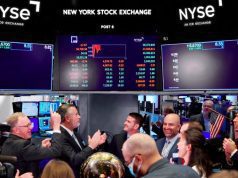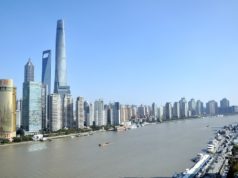BCG Global Asset Management Report 2023: Global AUM at $98.3 Trillion with Average Distribution Costs of 0.23%, Alternatives AUM at $20 Trillion With Revenue $193 Billion Representing 50% of Total Asset Management Revenue of $386 Billion
24th June 2023 | Hong Kong
Boston Consulting Group has released the BCG Global Asset Management Report 2023, providing key insights into the global asset management industry in 2022, AUM (Assets under Management), revenue & costs, growth of alternative assets, key trends in retail and direct indexing. In 2022, the Global Asset Management AUM is at $98.3 trillion and is forecast to grow to $128 trillion in 2027 (5 years). The AUM by region is North America $46.5 trillion, Europe $22.2 trillion, APAC $23.4 trillion, Latin America $1.9 trillion, Middle-East & Africa $1.6 trillion. The AUM by Asset is Alternative assets $20 trillion, Active specialties $16 trillion, Solutions, LDI, and balanced $12 trillion, Active core $29 trillion, & Passive $21 trillion. In 2022, the Alternatives AUM of $20 trillion represents 21% of Global AUM of $98.3 trillion, and revenue of $193 billion representing 50% of Global Revenue of $386 billion. The Global Alternatives AUM by Asset – Liquid alternatives $600 billion (3%), Commodities $800 billion (4%), Infrastructure $1.2 trillion (6%), Private debt $1.2 trillion (6%), Hedge funds $3.8 trillion (19%), Real estate / REITs $4.6 trillion (23%), Private equity & venture capital $7.8 trillion (39%). 35% of new funds survive the 10-Year mark, and from 2010 to 2022 – 90% of allocation are into Passive Funds ($5.5 trillion vs $600 billion active). The average distribution costs for asset manager is 0.23% in 2022 (2015: 0.27%), $230k for every $100 million, $2.3 million for every $1 billion, $230 million for every $100 billion. The Costs on Revenue is 72% of revenue. Alternatives market is highlighted as a growing opportunity, and retail clients growth out-paced institutional segment, with higher profitability (fees tend to be higher because retail investors lack the scale that allows institutional investors to pay steeply discounted fees). Direct Indexing, which enables advisors and their clients to buy securities one at a time and mix them into an individualized portfolio, has really caught on in the United States after fractional shares and zero-fee trades went mainstream in 2019. Portfolios built with direct indexing increased from around $100 billion to more than $450 billion since 2015. See below for key summary & findings | View report here
“ Global AUM at $98.3 Trillion with Average Distribution Costs of 0.23%, Alternatives AUM $20 Trillion With Revenue $193 Billion Representing 50% of Total Asset Management Revenue of $386 Billion “
BCG Global Asset Management Report 2023

Boston Consulting Group has released the BCG Global Asset Management Report 2023, providing key insights into the global asset management industry in 2022, AUM (Assets under Management), revenue & costs, growth of alternative assets, key trends in retail and direct indexing.
Summary – 2022 Asset Management Data:
- Global Asset Management AUM – $98.3 trillion (2027: $128 trillion)
- Total Asset Management Revenue – $386 billion (2027: $470 billion)
- AUM by Region – North America $46.5 trillion, Europe $22.2 trillion, APAC $23.4 trillion, Latin America $1.9 trillion, Middle-East & Africa $1.6 trillion
- AUM by Asset* – Alternative assets $20 trillion, Active specialties $16 trillion, Solutions, LDI, and balanced $12 trillion, Active core $29 trillion, Passive $21 trillion
- Alternatives AUM – $20 trillion (21% of Global AUM)
- Alternatives Revenue – $193 billion (50% of Global Revenue)
- Global Alternatives AUM by Asset – Liquid alternatives $600 billion (3%), Commodities $800 billion (4%), Infrastructure $1.2 trillion (6%), Private debt $1.2 trillion (6%), Hedge funds $3.8 trillion (19%), Real estate / REITs $4.6 trillion (23%), Private equity & venture capital $7.8 trillion (39%)
- Global Alternatives Revenue by Asset – Liquid alternatives $1.9 billion (1%), Commodities $3.8 billion (2%), Infrastructure $5.7 billion (3%), Private debt $7.7 billion (4%), Hedge funds $55 billion (29%), Real estate / REITs $21 billion (11%), Private equity & venture capital $96 billion (50%)
Notes*
- Alternative assets – Includes hedge funds, private equity, real estate, infrastructure, commodities, private debt, and liquid alternative mutual funds (such as absolute return, long and short, market neutral, and trading oriented). Private equity and hedge fund revenues do not include performance fees.
- Active specialties – Includes equity specialties (such as global and emerging-market active equity, developed-market small cap and mid-cap, and themes) and fixed- income specialties (such as emerging markets, high-yield, flexible, and inflation linked).
- Solutions, LDI, and balanced – Includes target date, target maturity, liability driven, outsourced chief investment officer, multi-asset balanced, and multi-asset allocation.
- Active core – Includes actively managed developed-market large-cap equity, developed-market government and corporate debt, money market, and structured products.
Summary – Asset Management Insights:
- The Alternatives Market – Conventional asset managers have entered the alternatives market, gathered significant assets, unlocked new offerings to bring to their clients, catalyzed a high-growth opportunity
- 4 ways to enter Alternatives Market for Asset Managers – Build in-house, Buy and use an affiliate or boutique structure, Buy and operate independently, Establish partnerships
- The Retail opportunity – Asset growth in the retail segment has out-paced institutional segment, with higher profitability (fees tend to be higher because retail investors lack the scale that allows institutional investors to pay steeply discounted fees)
- Direct Indexing – enables advisors and their clients to buy securities one at a time and mix them into an individualized portfolio, Direct indexing really caught on in the United States after fractional shares and zero-fee trades went mainstream in 2019, Portfolios built with direct indexing increased from around $100 billion to more than $450 billion since 2015
- Funds Surviving 10-Year Mark – 35% of new funds (Every 100 funds, 35 funds survive 10-year mark)
- Net flow into United States Passive Funds vs Active Funds) – 2010 to 2022, 90% into Passive Funds ($5.5 trillion vs $600 billion)
- Average Distribution Costs – 0.23% in 2022 (2015: 0.27%), $230k for every $100 million, $2.3 million for every $1 billion, $230 million for every $100 billion
- Costs on Revenue – 72% of revenue
- Asset Manager Cost Breakdown – Sales & marketing (5% to 20%), Investment management & trade execution (20% to 35%), Operations (15% to 25%), Information technology (10% to 25%), Business management & support (15% to 20%)
- 10 Proven Initiatives to Address Costs – Simplify organization, Optimize (front office, sales, marketing), Achieve trade-execution excellence, Rightsize support functions, Balance the middle & back offices, Simplify IT, Reduce 3rd-party spending, Lower real estate & office expenses, Shed less profitable products & focus on profitable ones, Divest full business units
BCG Global Asset Management Report 2023
1) Global Asset Management AUM & Revenue – (2022 & 2027)
2022 AUM & Revenue
- Global AUM – $98.3 trillion (2027: $128 trillion)
- Total Revenue – $386 billion (2027: $470 billion)
2022 Asset Management AUM – by Region
- Global – $98.3 trillion
- North America – $46.5 trillion
- Latin America – $1.9 trillion
- Europe – $22.2 trillion
- Middle-East & Africa – $1.6 trillion
- APAC – $23.4 trillion
APAC (ex-Japan & Australia) – $16.3 trillion
Japan & Australia – $7.1 trillion
2022 Asset Management AUM Growth – by Region
- Global – Decrease 10%
- North America – Decrease 14%
- Latin America – Increase 5%
- Europe – Decrease 11%
- Middle-East & Africa – Increase 5%
- APAC – Increase 0.4%
2022 Global AUM – By Asset*
- Alternative assets – $20 trillion (21% of global)
- Active specialties – $16 trillion (17%)
- Solutions, LDI, and balanced – $12 trillion (12%)
- Active core – $29 trillion (29%)
- Passive – $21 trillion (21%)
- Total AUM – $98 trillion
Notes*
- Alternative assets – Includes hedge funds, private equity, real estate, infrastructure, commodities, private debt, and liquid alternative mutual funds (such as absolute return, long and short, market neutral, and trading oriented). Private equity and hedge fund revenues do not include performance fees.
- Active specialties – Includes equity specialties (such as global and emerging-market active equity, developed-market small cap and mid-cap, and themes) and fixed- income specialties (such as emerging markets, high-yield, flexible, and inflation linked).
- Solutions, LDI, and balanced – Includes target date, target maturity, liability driven, outsourced chief investment officer, multi-asset balanced, and multi-asset allocation.
- Active core – Includes actively managed developed-market large-cap equity, developed-market government and corporate debt, money market, and structured products.
Global AUM 2027 Forecasts
- Alternative assets – $29 trillion (22% of global)
- Active specialties – $20 trillion (15%)
- Solutions, LDI, and balanced – $15 trillion (12%)
- Active core – $33 trillion (26%)
- Passive – $31 trillion (25%)
- Total AUM – $128 trillion
2022 Global Revenue – By Asset
- Alternative assets – $193 billion (50% of global)
- Active specialties – $68 billion (18%)
- Solutions, LDI, and balanced – $38 billion (10%)
- Active core – $65 billion (18%)
- Passive – $22 billion (6%)
- Total Revenue – $386 billion
- 0.39% revenue of total AUM
Global Revenue By Asset – 2027 Forecasts
- Alternative assets – $258 billion (55% of global)
- Active specialties – $72 billion (15%)
- Solutions, LDI, and balanced – $44 billion (9%)
- Active core – $67 billion (14%)
- Passive – $30 billion (6%)
- Total Revenue – $470 billion
2) Asset Management Revenue & Costs
- 2022 Global AUM – $98.3 trillion
- 2022 Total Revenue – $386 billion
Average Distribution Costs
- 2010 – 0.28%
- 2015 – 0.27%
- 2022 – 0.23% ($230k for every $100 million, $2.3 million for every $1 billion, $230 million for every $100 billion)
Costs on Revenue
- 2010 – 71% of revenue
- 2015 – 69% of revenue
- 2022 – 72% of revenue
Asset Manager Cost Breakdown:
- Sales & marketing – 5% to 20%
- Investment management & trade execution – 20% to 35%
- Operations – 15% to 25%
- Information technology – 10% to 25%
- Business management & support – 15% to 20%
Top Sales & marketing costs:
- Sales professionals
- Marketing
- Product specialists
- Client services
- Other
Top Investment management & trade execution costs:
- Portfolio managers & traders
- Research & analytics
- Other
Top Operations costs:
- Fund services
- Asset services
- Client operations
- Post-trade services
- Utilities
- Other
- Transfer agency
Top Information technology costs:
- App development
- App maintenance
- App hosting
- End-user technology
- Other
Top Business management & support costs:
- Management & strategy
- Finance
- Procurement & facilities
- Legal & audit
- HR
- Compliance
- Risk management
- Other
Key Increase in Costs:
- Sales & marketing – Increasing number of sales personnel, clients require more personalized or specialized service levels
- Investment management & trade execution – Increasing product suite, related support, data & technology
- Operations – Client-driven customizations, firm’s expanded footprint, higher average cost of investing in private markets
- Information technology – Investment to build more capabilities, data & analytics, maintaining legacy systems due to slow decommissioning, ongoing migration to cloud
- Business management & support – Expansion of HR, legal, finance functions to support business growth
10 Proven Initiatives to Address Costs:
- Simplify organization
- Optimize front office, sales, marketing
- Achieve trade-execution excellence
- Rightsize support functions
- Balance the middle & back offices
- Simplify IT
- Reduce 3rd-party spending
- Lower real estate & office expenses
- Shed less profitable products & focus on profitable ones
- Divest full business units
3) Funds Surviving 10-Year Mark
New Funds Reaching 10-Year Mark (Surviving 10 years)
- 2010 – 60% of new funds
- 2015 – 42% of new funds
- 2022 – 35% of new funds (Every 100 funds, 35 funds survive 10-year mark)
4) Passive Funds
Percentage of Net flow into United States Passive Funds (Passive vs Active Funds):
- 1990 to 1999 – 9% into Passive Funds ($2.4 trillion vs $200 billion)
- 2000 to 2009 – 27% into Passive Funds ($3.2 trillion vs $1.2 trillion)
- 2010 to 2022 – 90% into Passive Funds ($5.5 trillion vs $600 billion)
Passive Funds ~ Mutual Funds, ETFs
5) Alternatives
2022 AUM & Revenue
- Global AUM – $98.3 trillion (2027: $128 trillion)
- Total Revenue – $386 billion (2027: $470 billion)
- Alternatives AUM – $20 trillion (21% of Global AUM)
- Alternatives Revenue – $193 billion (50% of Global Revenue)
2027 AUM & Revenue
- Alternative AUM – $29 trillion
- Total Alternative Assets Revenue – $258 billion
Global Alternatives AUM – 2022:
- Liquid alternatives – $600 billion (3%)
- Commodities – $800 billion (4%)
- Infrastructure – $1.2 trillion (6%)
- Private debt – $1.2 trillion (6%)
- Hedge funds – $3.8 trillion (19%)
- Real estate / REITs – $4.6 trillion (23%)
- Private equity & venture capital – $7.8 trillion (39%)
- Total Alternative Assets – $20 trillion
Liquid alternatives include respective mutual funds and exchange-traded funds (such as absolute return, long and short, market neutral, and trading oriented)
Global Alternatives AUM – 2027 Forecasts:
- Liquid alternatives – $580 billion (2%)
- Commodities – $1.1 trillion (4%)
- Infrastructure – $2 trillion (7%)
- Private debt – $2 trillion (7%)
- Hedge funds – $4.6 trillion (16%)
- Real estate / REITs – $6 trillion (21%)
- Private equity & venture capital – $12.4 trillion (43%)
- Total Alternative Assets – $29 trillion
Global Alternatives Revenue by Asset – 2022:
- Liquid alternatives – $1.9 billion (1%)
- Commodities – $3.8 billion (2%)
- Infrastructure – $5.7 billion (3%)
- Private debt – $7.7 billion (4%)
- Hedge funds – $55 billion (29%)
- Real estate / REITs – $21 billion (11%)
- Private equity & venture capital – $96 billion (50%)
- Total Alternative Assets Revenue – $193 billion
Global Alternatives Revenue by Asset – 2027 Forecasts:
- Liquid alternatives – $2.5 billion (1%)
- Commodities – $5.1 billion (2%)
- Infrastructure – $7.7 billion (3%)
- Private debt – $1.2 trillion (5%)
- Hedge funds – $56 billion (22%)
- Real estate / REITs – $23 billion (9%)
- Private equity & venture capital – $149 billion (58%)
- Total Alternative Assets Revenue – $258 billion
6) Alternatives Access points for investors
- Liquid alternatives – Traditional or alternative managers with a mutual fund or ETF lineup. Via brokerage, exchange, direct or via a wealth manager
- Traded REITs and BDCs – Traditional or specialized managers with REIT and BDC products. Accessed via brokerage, exchange, direct or via a wealth manager
- Non-traded REITs and BDCs – Direct vehicles, accessed via an advisor or intermediary. Some availability via institutional platforms
- Interval funds – General partners, funds of funds, and secondaries, accessed directly, utilize institutional pooling platforms
- Tender offers – General partners, funds of funds, and secondaries, accessed via an advisor, utilize institutional pooling platforms
- Closed-end and direct funds – General partners, funds of funds, and secondaries, accessed via an advisor. Some availability via institutional pooling platforms
ETF ~ exchange-traded fund, REIT ~ real estate investment trust, BDC ~ business development company.
7) Alternatives Key Trends
The Alternatives Market:
- Conventional asset managers have entered the alternatives market.
- Gathered significant assets, unlocked new offerings to bring to their clients, catalyzed a high-growth opportunity for their business.
Traditional Asset Managers Insights:
- Alternative & Private Market AUM – $3 trillion
- Share of firm’s total AUM in alternative and private market products – 8% to 12%
- No. of acquisitions made to expand alternatives capabilities – 50+
- Firms bringing private equity, real estate, and private debt products to market – 90%
- Firms bringing hedge fund strategies to market – 60%
- Share of firms bringing liquid alternatives to market – 50%
- Share of firms with fintech or other distribution partnerships – 30%
8) Alternatives Business Considerations
4 Ways to enter Alternatives Market for Asset Managers:
- Build in-house
- Buy and use an affiliate or boutique structure
- Buy and operate independently
- Establish partnerships
A) Build in-house
- Build out alternatives capabilities in-house
- May need to acquire external teams
- Allows for high integration and more control by parent company
- High cost; requires an established brand and strong distribution capabilities
B) Buy & use an affiliate or boutique structure
- Acquire alternatives firm and use a multiple affiliate or boutique model
- Partial integration is possible across noncore functions
- Can build a broad suite of alternatives through acquisitions
- Parent company supports brands while providing distribution
C) Buy & operate independently
- Acquire alternatives firm that will remain independent
- Full autonomy is a key to success
- Seek products that fill gaps and clients’ needs
- Nearly all functions remain independent
D) Establish partnerships
- Develop partnerships or distribution agreements
- Provide 3rd-party products, rather than proprietary ones
- Alternatives partners benefit from unique distribution access
- Scalable, but must optimize shared economics
5 principles of success in establishing an alternatives business:
- Perfect the value proposition
- Tailor incentives to drive growth
- Preserve the autonomy of the alternatives team
- Optimize distribution and fundraising
- Align strategic interests
9) Alternatives for Client Journey, Retail Investors
A) Lead / Marketing:
- Engagement – Brand marketing, Website, app interactions
- Data – Name, contact information, demographics, and location
B) Prospect / Marketing:
- Engagement – General educational emails, Website, app interactions, Personalized emails, Sales calls
- Data – Asset allocation, fund holdings, web interactions, interest in content
C) Client / Sales:
- Engagement – Personal calls, Platform & app interactions, Reminder emails, text messages
- Data – Trade behavior (purchases and redemptions), performance, call interactions
The Retail opportunity:
- Asset growth in the retail segment has out-paced institutional segment globally (2012 to 2022)
- Technology, product innovation, (select markets) regulatory reforms, created tailwinds to democratize access to alternative investments.
- Using private equity funds as a proxy for alternative investments, most of the retail distribution opportunity exists in the North America & Asia-Pacific
- Retail investment in alternatives profitability – fees tend to be higher because retail investors lack the scale that allows institutional investors to pay steeply discounted fees.
- Retail market is a diverse demographic
- Wealthiest retail segment (UHNWs) have a broader suite of products that they can access, including institutional-like offerings, closed-end & direct funds, tender offers, interval funds.
- Mass-market retail investors limited to more liquid products with lower minimum investment requirements, eg. alternative mutual funds and ETFs, real estate investment trusts, business development companies.
- In the US market, private & trust banks and registered investment advisors represent promising distribution channels because their wealthier clients and asset allocation strategies result in higher demand for alternatives. Multi-channel opportunity also exists in the UK through banks and independent wealth advisors.
- European continent – Asset manager need access to the broader universal banking system (Gatekeepers to the majority of retail capital)
- Comprehensive view of the distribution channels needed to access retail investors is critical to identifying the best fit when bringing alternative products to market.
10) Direct Indexing
- Direct (or custom) indexing is the ability to create highly customized portfolios at scale
- Direct indexing enables advisors and their clients to buy securities one at a time and mix them into an individualized portfolio
- Power to create value shifts from the asset manager to the end customer.
Personalised Products using Direct Indexing:
- Vast majority of products sold to retail customers are one size fits all
- Customization (through products such as separately managed accounts) is reserved for UHNW individuals or institutional segments.
Direct Indexing Trends:
- United States has been the main adopter of direct indexing
- Portfolios built with direct indexing increased from around $100 billion to more than $450 billion since 2015
- Technological advances have unlocked the ability to scale in recent years
- Direct indexing really caught on in the United States after fractional shares and zero-fee trades went mainstream in 2019
- Initial developments helped create a perfect storm for the popularity of direct indexing in a market where investors already favored passive products
- For asset manager – such as higher fees (compared with passive funds) and long-lasting investor relationships.
- Largest wealth managers have been very transparent about their intention to let advisors create customized portfolios, essentially bypassing the traditional asset management distribution value chain. Many asset managers (Boston Consulting Group) spoken to have not fully processed this implication.
- Technology that makes direct indexing possible is here to stay, presenting risks to asset managers but also multiple opportunities.
Direct Indexing Strategies
- Product play – Remain competitive with an enhanced tax-focused product that limits customization
- Platform play – Provide digital advisory to investors, allowing customization on existing products
- Service play – Build direct indexing as a white-label service, selling to smaller shops and regional players
- Direct Indexing Business Entry
- Partner with a vendor – Launch quickly with minimal operational requirements necessary to support
- Build in-house – Take time to create a solution that meets clients’ needs while retaining margins
- Buy an existing player – Acquire a firm’s intellectual property and talent, as well as its existing customers and retained margins
Boston Consulting Group
The BCG Global Asset Management Report 2023 provides key insights into the global asset management industry, AUM, revenue & costs, growth of alternative assets, retail and direct indexing trends. Globally, 44 markets were assessed, including North America (Canada and the US); Europe (Austria, Belgium, Czech Republic, Denmark, Finland, France, Germany, Greece, Hungary, Ireland, Italy, Luxembourg, the Netherlands, Norway, Poland, Portugal, Russia, Spain, Sweden, Switzerland, Turkey, and the UK); Asia-Pacific (Australia, Hong Kong, India, Indonesia, Japan, Mainland China, Malaysia, Singapore, South Korea, Taiwan, and Thailand); Middle East and Africa (selected sovereign wealth funds of the region and mutual funds, plus Morocco and South Africa); Latin America (Argentina, Brazil, Chile, Colombia, and Mexico); and offshore AuM (which is not included in any region).
Sign Up / Register
Caproasia Users
- Manage $20 million to $3 billion of assets
- Invest $3 million to $300 million
- Advise institutions, billionaires, UHNWs & HNWs
Caproasia Platforms | 11,000 Investors & Advisors
- Caproasia.com
- Caproasia Access
- Caproasia Events
- The Financial Centre | Find Services
- Membership
- Family Office Circle
- Professional Investor Circle
- Investor Relations Network
Monthly Roundtable & Networking
Family Office Programs
The 2025 Investment Day
- March - Hong Kong
- March - Singapore
- July - Hong Kong
- July - Singapore
- Sept- Hong Kong
- Sept - Singapore
- Oct- Hong Kong
- Nov - Singapore
- Visit: The Investment Day | Register: Click here
Caproasia Summits
- The Institutional Investor Summit
- The Investment / Alternatives Summit
- The Private Wealth Summit
- The Family Office Summit
- The CEO & Entrepreneur Summit
- The Capital Markets Summit
- The ESG / Sustainable Investment Summit






